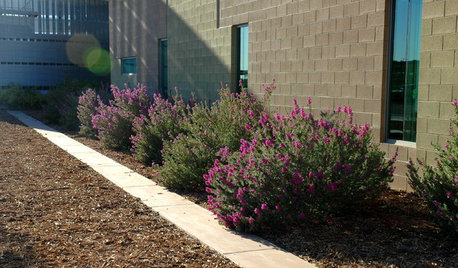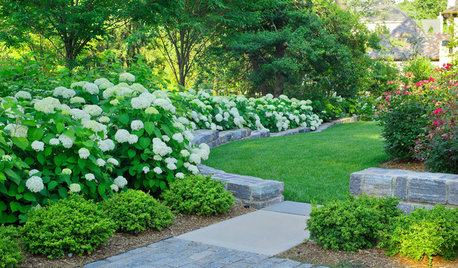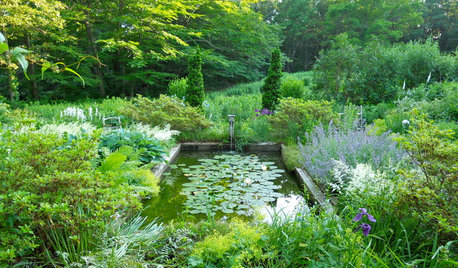Large Shrubs for Pruning into Small Trees
aloha2009
11 years ago
Related Stories

GARDENING GUIDESHow to Prune Your Flowering Shrubs for the Best Blooms
Less is often more when it comes to properly pruning flowering shrubs. Here’s what to do and why
Full Story
TREESHow to Buy Healthy Trees and Shrubs
A healthy young plant with a strong form is more likely to do well in your yard. Here’s what to look for at the nursery
Full Story
WINTER GARDENINGPruning Secrets for Exquisite Roses
Encourage gorgeous blooms year after year with this time-tested advice on how to prune your rosebush in winter for health and shape
Full Story
GARDENING GUIDESGot Frost-Damaged Plants? How It Happens, and When and How to Prune
Crispy brown leaves are a sure sign that Jack Frost has been to your neighborhood
Full Story
GARDENING GUIDESHow to Avoid Overcrowded, Overpruned Shrubs
Go for a more natural look that’s easier and less expensive to maintain by giving your plants the right amount of growing room
Full Story
FLOWERS AND PLANTS10 Essential Shrubs for Mid-Atlantic Gardens
Easy-to-grow mid-Atlantic native shrubs celebrate the character of the region
Full Story
GARDENING GUIDES8 Deer-Resistant Elegant Evergreen Shrubs to Plant This Fall
Who knew that such beautiful shrubs could be deer-resistant?
Full Story
GARDENING GUIDES10 Drought-Tolerant Shrubs That Thrive in Full Sun and Reflected Heat
Got a hot spot in your garden where plants often die? Try these tough shrubs that add beauty while shrugging off the heat
Full Story
GARDENING GUIDESPrunus Virginiana Thrives Under Deciduous Trees
Plant chokecherry for showy white flowers favored by native bees in spring, and to provide nesting habitat and food for birds
Full Story
PLANTING IDEAS5 Reasons to Bring Shrubs Into the Flower Garden
Mix up the garden experience and let the flowers and shrubs play together
Full Story









Yardvaark
karinl
Related Professionals
Eden Prairie Landscape Architects & Landscape Designers · Glassmanor Landscape Architects & Landscape Designers · Salem Landscape Contractors · Wakefield Landscape Contractors · Beachwood Landscape Contractors · Clearlake Landscape Contractors · Ellicott City Landscape Contractors · Louisville Landscape Contractors · Middleton Landscape Contractors · Newberg Landscape Contractors · Rockwall Landscape Contractors · Wentzville Landscape Contractors · 07920 Landscape Contractors · Hockessin Decks, Patios & Outdoor Enclosures · West Chicago Decks, Patios & Outdoor Enclosuresnatal
Yardvaark
aloha2009Original Author
Yardvaark
natal